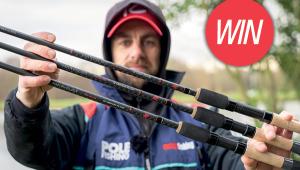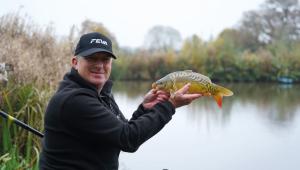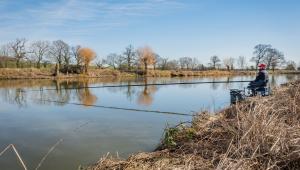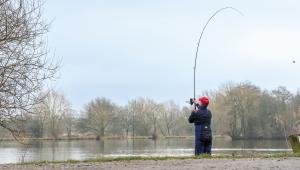The Silt Trap!

Match Fishing catches up with MAP-backed star Tony Curd for a lesson in tackling the sometimes avoided, but fish-filled areas of a swim – the silt traps.
We have all been there – that fizzing cauldron of wasted match time and effort trying to catch from what can only be described as a Jacuzzi, which gives the illusion of being black with fish but often delivers so little.
As our commercial fisheries mature all of them have areas in each lake where silt settles; whether it is in open water or down the track on a snake-style lake it’s a common area that many avoid due to foul hooking, the Jacuzzi effect or just simply because you cannot catch despite the deceiving signs of fish present. Up until recently I joined this train of thought and almost wrote it off as a bad job, only utilising these areas as a shallow line during the warmer months.
As more and more venues stock F1s on a regular basis, this has forced anglers to keep catching consistently throughout a five-hour match to build a winning weight, and this means having more swim options available to use. For this feature, I have come back to the very peg at Coleman’s Cottage Fishery, in Essex, where fishing on the silt line became clear to me as a true winner during the winter and spring months before the fish move into the shallower water properly.
That particular match I was experiencing one of those matches where I was doing reasonably well fishing my other lines, but I was having lots of quiet spells that usually spell ‘game over’ for winning or even framing on most matches, and I needed a good run of bites to see me over the line.
In a moment of madness, I plumbed up my short line on a swim at around 10 metres down the middle of the lake, tapped in a few pellets and left it alone. Five minutes later a single bubble followed by a cluster meant it was time for a look – dropping in I had a bite immediately and a run of fish followed.
Not only were the fish more settled over the silt, where they felt happy to stick around for longer, they were of a much bigger stamp that I couldn’t catch anywhere else. That match was a success thanks to the change to the silt line and the following matches saw me set it up each time with plenty of success along the way.
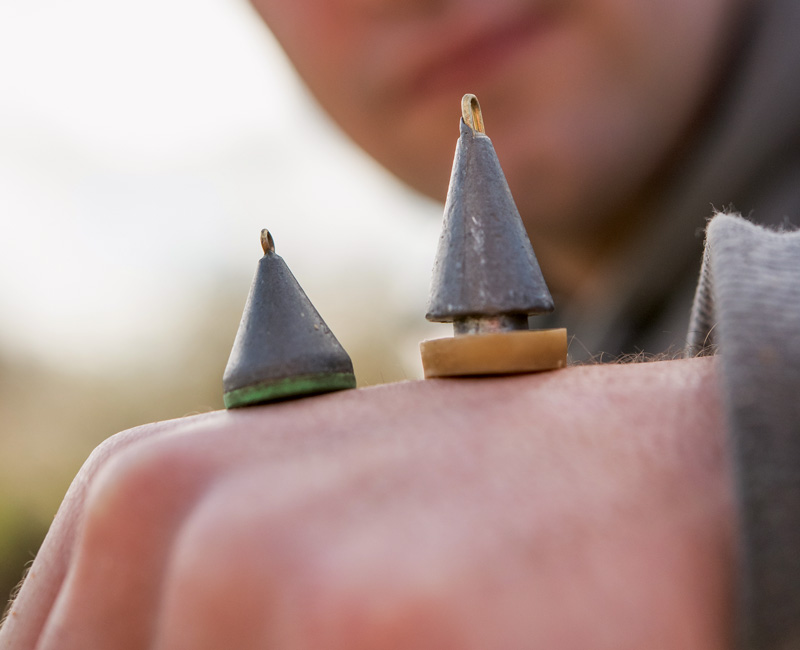
A light plummet shows the swin depth, the heavy one shows how deep the silt is.
What struck me as the biggest advantages for cold-water fishing was that it was not only the deepest part of my peg but it was the one area of my peg where I could be a little bit more positive and it was noticeable that once the fish turned up, I could have a prolonged spell without having to move very often. For that reason it became the line I’d leave late and more often than not enjoy a strong finish to most of the matches I was fishing.
While fishing this line is not revolutionary I did come across several stumbling blocks during my initial forays and getting these right made the world of difference to the amount of bites I got and more importantly bites converted into fish in the net.
The first issue I discovered was actually plumbing up in the first place – I like to use heavy plummets as a matter of course and my 30g version saw my rig coming back covered in black silt up to quite a depth, often covering my shot! While this helped me to gauge the depth of the silt it was nigh on useless to get a rig set properly, so some very light 10g plummets were the best bet to get it right initially, ensuring my rig was plumbed up to the bottom of the body of the float. This I feel was quite important, as once the fish started to dig around it gave me that little bit of leeway left or right of my intended area if any silt got moved or gouged out as the fish rooted around.
That leads me nicely into the next alteration I needed to make to my rigs for fishing in the softest areas of my swim – as mentioned, by plunging a heavy plummet into the swim you can get a rough idea of the depth of the softest part of the silt that is most likely to be disturbed as your match progresses. What I like to do is take the depth of this into account and add it to the line above my float. On more than one occasion I have been catching well and suddenly I’m biteless, with plumes of bubbles still appearing. I was fairly sure that the fish were still there, and checking the depth with a plummet revealed the problem. Half an hour before, I had been fishing perfectly plumbed up; now I was six inches off the bottom and on course for foul hookers, frustration or perhaps no bites. So, going forward it became a matter of habit to keep a check on whether the bottom had been scoured out by the feeding fish should my bites suddenly subside – it’s very rare that there isn’t an explanation for everything in fishing and by thinking constantly you’ll soon be ahead of the game!
A shorter line above the float could see your rig rendered useless so I’d always advise using a lash of at least a foot to enable you to adjust your rig as you go on. It also became a great indicator to me when to check for these changes to the bottom of my swim by using very well-dotted-down floats – to the point that if my hook bait became suspended off the deck my float would almost sink from sight and a sure sign that changes needed to be made.
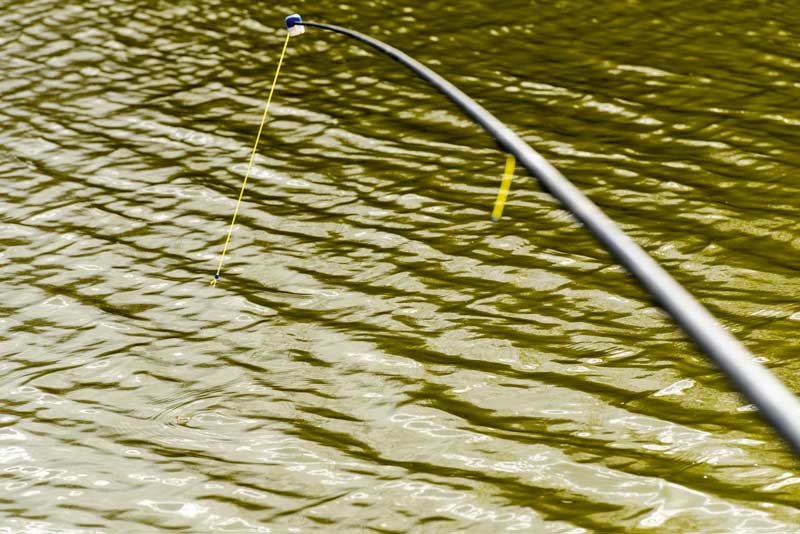
A soft elastic is important to prevent hook-pulls...
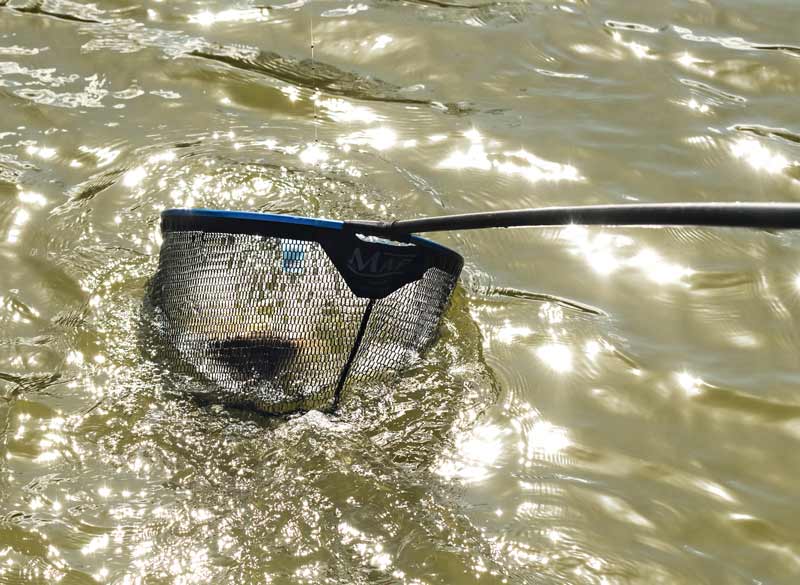
... leading to more fish in the net!
I feel the bait choices you make when fishing in these conditions is a very important one to get right and the last thing I ever want is something that magnifies the need for the fish to disturb the bottom any more than is necessary so baits like maggots are out of my approach. Pellets, being dormant, give the perfect effect for these soft-bottomed lakes.
More important than that, though, is how you actually feed your peg, and the best way I have found to start this line is to pot in a very small amount of 2mm Bait-Tech Carp & Coarse Pellets – roughly two small Kinder pots – around 10 minutes before I intend moving onto it. For me, micros are only ever about drawing some fish and continuing to feed them can see you end up in a mess with fizzing and preoccupied fish, so as a matter, of course, I like to change over to feeding 4mm hard pellets instead. These give me fewer items per feed, which are easily picked up by the fish with minimal disturbance and therefore more proper bites! My choice hook bait is always 4mm and 6mm Bait-Tech Xpand pellets, which sit nicely on the bottom complementing the feed perfectly.
What I have found to be a real edge, though, is dosing my Xpands in the new Bait-Tech Juice; once pumped and stored in water certain batches of expanders are prone to breaking down during the match but adding this to them it gives a glaze that prevents them drying out as quickly. I also have no problems with pellets splitting later in the day, and it seems that F1s love the stuff
Setting my tackle up for the session on Pathfield Lake I kept it simple, with positive rigs of 4x16 MAP WD1 floats on 0.15mm MAP Power Optex to an 0.12mm hooklength, finished off with a size 18 B911 F1 hook – I set two duplicates up but they were both fished in the same (5ft) depth on two lines: one at the bottom of the near slope at six metres and one at the base of the far slope at 10 metres. These lines see me on the softest part of the lake bed, which is perfect for early springtime fishing. My shotting pattern was a simple spread bulk of No8 shot spread out at 1in intervals from my hooklength connection. I really do feel the bigger shot give me more positive bites in these situations and also help to cut down on any foul-hooked fish.
Elastic on both rigs was a very soft yellow 5-8 MAP TKS Twin Core; I feel this is very important as we often find ourselves fishing for a mixture of fish on modern commercials and, especially where F1s are concerned, it’s important to use a soft enough elastic to ensure none of these pull off unnecessarily, while still being able to land any carp you may run into.
To kick off I started on the nearer line, which I fed with a big pot initially containing the equivalent of two medium Flexi-Pots of micros with a few 4mms added. Dropping in over the top with a 4mm expander, feeding a small amount of micros with an odd 4mm each put-in, I only had to wait around five minutes before an odd bubble started to appear and it wasn’t too long before the float shot under and the first of an initial flurry of F1s up to 2lb was on its way to the net!
Action was brisk on the short line and I was soon thinking about trying to single out a few better carp. Picking up the potting kit again I cupped around 20 4mm pellets in on the 10m line and went on it 10 minutes later after spying a single bubble – these usually mean carp.
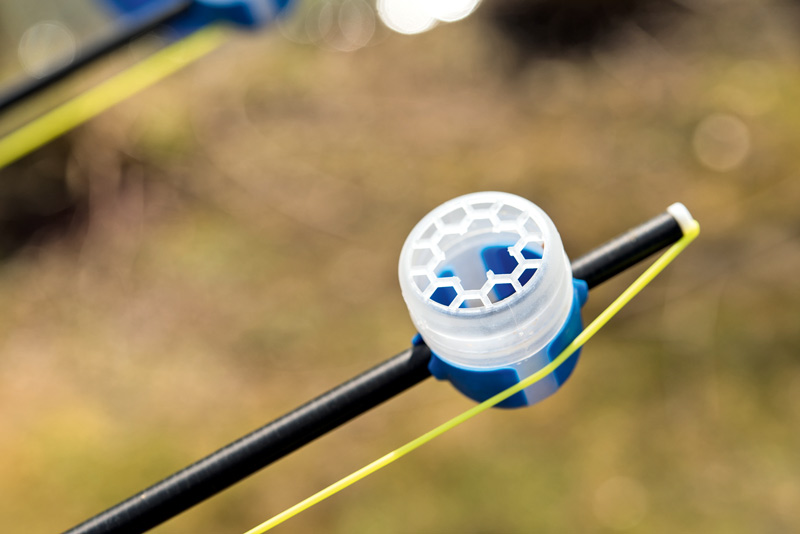
Use one of these to regulate the amount of pellets you feed
Slowly lowering the float into the swim and tapping in a few more 4mms over the top of it the float sharply shot straight under and my yellow elastic was soon stretched across the lake – this was no F1! Sure enough, a 7lb ghostie popped up, which would be a real bonus in a match. This was soon followed up with a 5lb F1!
By switching between both of my lines according to what activity I could see and being careful with the bait I introduced into my peg. This was not only the amount but the size of the pellets, depending on whether there were fish present or not. If there weren’t then introducing micros for a period to draw a few in and feeding larger, 4mm pellets when they were there I didn’t suffer any of the stereotypical issue commonly experienced when fishing a silty venue – I managed to catch consistently throughout my five-hour session, putting around 120lb into my nets on two lines that not many would even bother to give a thought to.
Different? Definitely! Winner? No doubt!
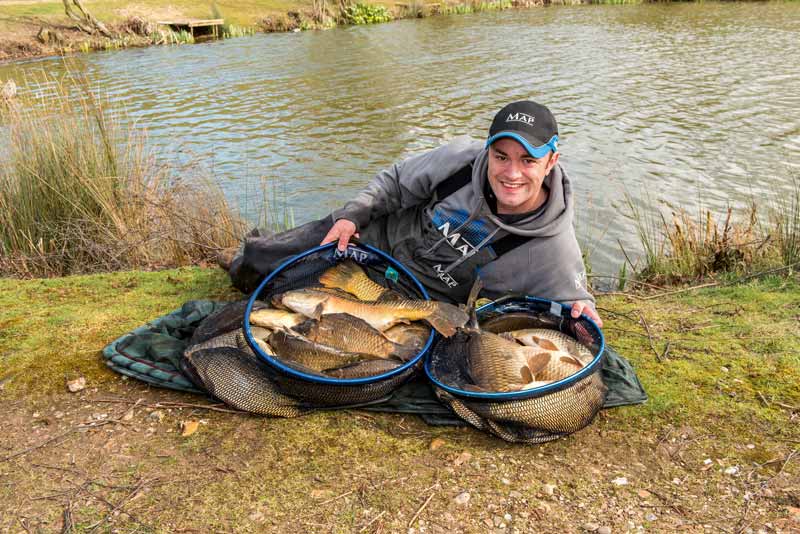
More fish than you could shake a silty stick at!
Like what you see?
Or buy a single issue
- Log in or register to post comments


